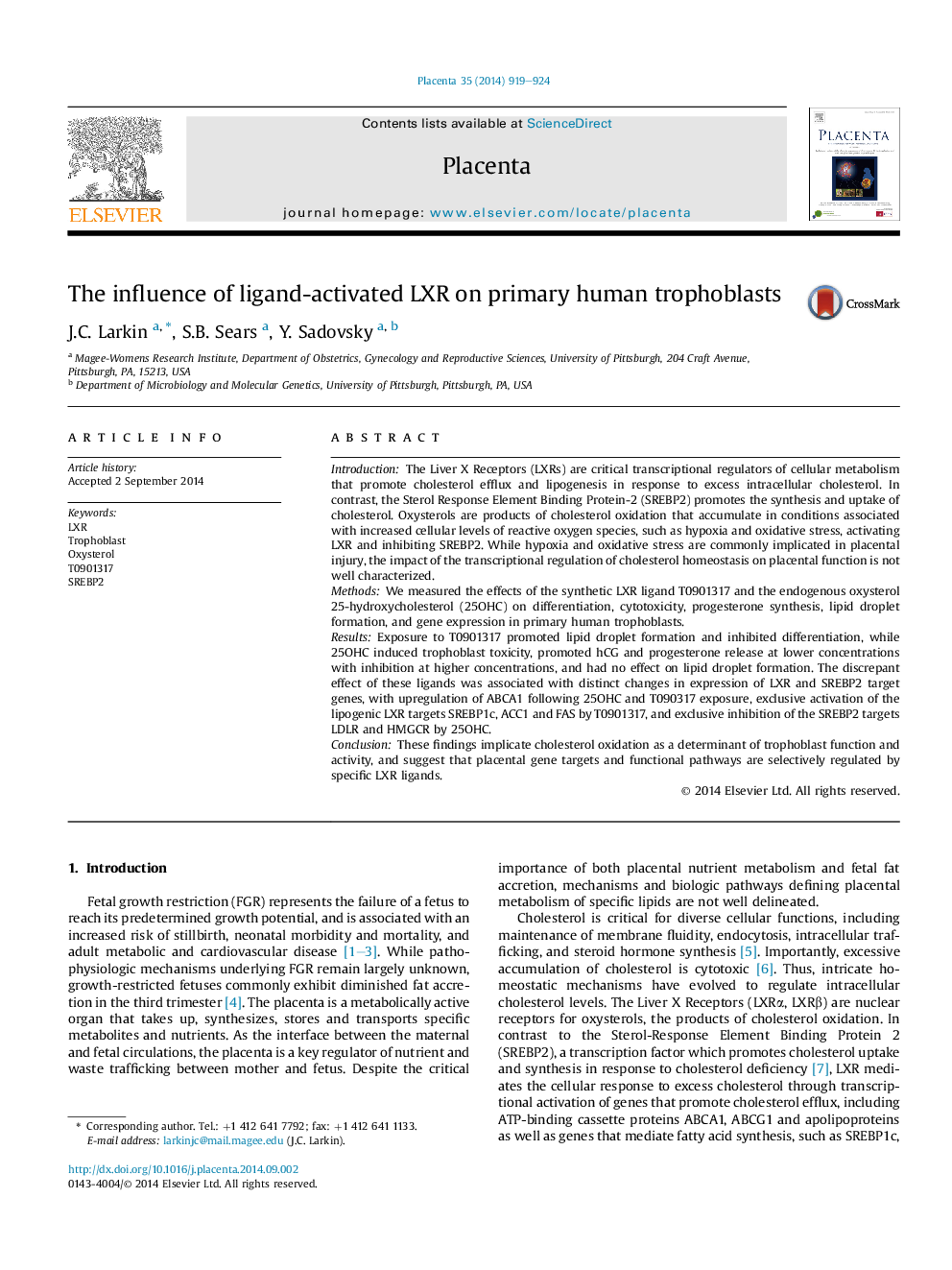| Article ID | Journal | Published Year | Pages | File Type |
|---|---|---|---|---|
| 2788770 | Placenta | 2014 | 6 Pages |
•We measured the effects T0901317 and 25-hydroxycholesterol in primary human trophoblasts.•T0901317 promoted lipid droplet formation and inhibited differentiation.•Unlike T0901317, 25OHC caused toxicity with a variable effect on hCG and progesterone release.•These ligands caused distinct changes in trophoblast gene expression.•Placental gene targets and functional pathways are selectively regulated by specific LXR ligands.
IntroductionThe Liver X Receptors (LXRs) are critical transcriptional regulators of cellular metabolism that promote cholesterol efflux and lipogenesis in response to excess intracellular cholesterol. In contrast, the Sterol Response Element Binding Protein-2 (SREBP2) promotes the synthesis and uptake of cholesterol. Oxysterols are products of cholesterol oxidation that accumulate in conditions associated with increased cellular levels of reactive oxygen species, such as hypoxia and oxidative stress, activating LXR and inhibiting SREBP2. While hypoxia and oxidative stress are commonly implicated in placental injury, the impact of the transcriptional regulation of cholesterol homeostasis on placental function is not well characterized.MethodsWe measured the effects of the synthetic LXR ligand T0901317 and the endogenous oxysterol 25-hydroxycholesterol (25OHC) on differentiation, cytotoxicity, progesterone synthesis, lipid droplet formation, and gene expression in primary human trophoblasts.ResultsExposure to T0901317 promoted lipid droplet formation and inhibited differentiation, while 25OHC induced trophoblast toxicity, promoted hCG and progesterone release at lower concentrations with inhibition at higher concentrations, and had no effect on lipid droplet formation. The discrepant effect of these ligands was associated with distinct changes in expression of LXR and SREBP2 target genes, with upregulation of ABCA1 following 25OHC and T090317 exposure, exclusive activation of the lipogenic LXR targets SREBP1c, ACC1 and FAS by T0901317, and exclusive inhibition of the SREBP2 targets LDLR and HMGCR by 25OHC.ConclusionThese findings implicate cholesterol oxidation as a determinant of trophoblast function and activity, and suggest that placental gene targets and functional pathways are selectively regulated by specific LXR ligands.
